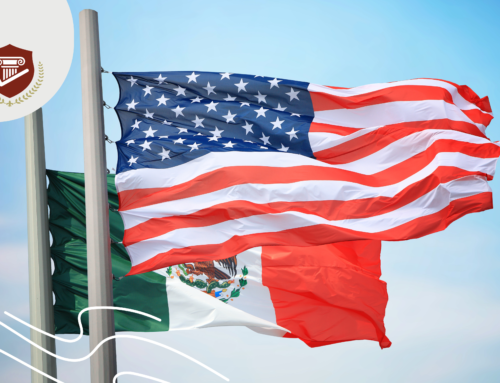I Entered the U.S. as a K-1 Fiancé(e), Now What?

There are many ways to become a permanent resident (get a green card) through your family. According to the current rules, there are four ways to become a permanent resident (get a green card) through your family. You can become a permanent resident as an immediate relative of your United States citizen spouse, child, or parent, as a family member of a United States citizen, as a family member of a permanent resident, or through special categories of family. The K nonimmigrant fiancé(e) is considered under special categories of family, and the process of getting a K visa is relatively complex.
If you are a K visa immigrant, you must carefully follow the requirements that are set forth by the U.S. Citizenship and Immigration Services (USCIS). For example, if you are granted a visa to enter the United States as a K-1 fiancé(e) of a United States citizen, the rules require you to marry the U.S. citizen who petitioned for you within 90 days after you enter the United States. If you entered the United States as a K-1 fiancé(e), but you did not get married, that means that you are violating the U.S. immigration law. Consequently, you may not be able to adjust your status to that of a permanent resident. To avoid any potential problems or complications, we encourage you to talk to an experienced lawyer directly about your specific case.
What is a K-1 Visa?
K-visa categories for fiancé(e)s of United States citizen (K-1 visa) and their accompanying minor children (K-2 visas) were created to speed up the immigration process for qualifying individuals engaged to United States citizens so they could travel more quickly to the United States. Also, the fiancé(e) of the United States citizen does not have to be separated for a long time from his or her intended spouse. For more information, please see our related article K-1 Fiancé(e) visa.
To be eligible to file a fiancé(e) petition, you must show that:
- You are a United States citizen;
- You and your fiancé(e) intend to marry within 90 days of your fiancé(e) entering the United States;
- You both are free to marry (none of you is currently married; if either of you was married before, there must be a final divorce decree for each marriage); and
- You have met each other in person within 2 years before you file your petition. There are two exceptions to this in-person meeting requirement: (1) if the requirement to meet your fiancé(e) would violate strict and long-established customs of your or your fiancé(e) foreign culture or social practice; or (2) if the requirement to meet your fiancé(e) in person would result in extreme hardship to you. If you think your case falls under one of those requirements, you will need to submit evidence of it with the petition.
What should I do after entering the U.S. with a fiancé(e) visa?
After you enter the United States with a K-1 fiancé(e) visa, you have 90 days to marry your United States citizen fiancé(e). A legally valid marriage must be registered within 90 days. To find out what constitutes a legally valid marriage in your state, you and your fiancé(e) should check with local authorities.
As soon as you marry, you, the fiancé(e), should file a green card application (Form I-485, Application to Register Permanent Residence or to Adjust Status). Together with the green card application, your can file an application for Employment Authorization and Travel Document, which would enable you to work in the U.S. and travel internationally while your green card application is pending.
Ideally, you should not only get married within 90 days, but also file your green card application within 90 days. Although legal precedent suggests that a foreign fiancé(e) can still obtain a green card, even if he/she applies for the green card after 90 days, some local USCIS offices may require you to file additional forms, if you file after your fiancé(e) status expired. Filing within 90 days would also significantly decrease the risk of the foreign fiancé(e) being detained by immigration authorities. It is important to remember that the foreign fiancé(e) will not have any documents to prove his/her status after 90 days end and before he/she files for a green card. Therefore, it is in the couple’s best interests to get married and file a green card application for the foreign fiancé(e) as soon as possible upon the foreign fiancé(e)’s arrival to the United States.
It is recommended to have an experienced immigration attorney represent you in your green card application to make sure that you submit all required documents.
What if I entered the U.S. as a K-1 fiancé(e) and got married after 90 days?
The current rules state that you and your fiancé(e) must marry within 90 days of your fiancé(e) entering the United States. However, suppose unexpected circumstances occurred, and you and your fiancé(e) did not get married within the 90 days, but rather you got married after the 90 days permitted by K-1 visa have passed. You wonder whether you are still eligible to adjust your status to that of a permanent resident.
You can still apply for a green card based on your marriage, as long as you got married to your original petitioner (the U.S. citizen who filed for your K-1 visa), not someone else. However, if you did not get married within 90 days from your entry, it will be insufficient for you to only file your green card application. Your U.S. Citizen spouse will have to file Petition for Alien Relative (Form I-130) for you, showing that your marriage is valid, and that you have a bona fide relationship. Essentially, you will have to provide the same documents you already submitted for your fiancé(e) petition again, plus more recent documents showing your valid relationship after you entered the United States, plus your marriage certificate. There is also an additional filing fee for the Form I-130 (currently $420).
What if I entered the United States as a K-1 fiancé(e), but did not get married?
It is important that you follow the U.S. immigration law once you enter the United States as a K-1 fiancé(e). One of the requirements for a K-1 visa is that you and your fiancé(e) must intend to marry within 90 days of your fiancé(e) entering the United States. So, if you entered the United States as a K-1 fiancé(e), but for whatever reasons, you did not marry the United States citizen who petitioned for you, that means that you are violating the U.S. immigration law. Your fiancé(e) status automatically expires after 90 days. The fiancé(e) status cannot be extended. Even if you marry a different United States citizen, you will not be able to get a green card without leaving the United States first. Your K-1 status only allows you to receive a green card if you marry the specific United States citizen who petitioned for you.
So what can you, as the fiancé(e), do? According to USCIS, you should leave the United States before the end of the 90-day period, if you do not marry. If you do not leave the United States, you would violate the U.S. immigration law. As a result, you can be removed or deported from the United States. That could affect your future eligibility to receive United States immigration benefits. To avoid being removed or deported by the immigration officials, you must leave the United States immediately.
Besides leaving the United States if the marriage does not take place, the only other option you may have is to apply for asylum. You may be eligible for asylum, if you cannot go back to your home country, because you are afraid of being harmed there for the reasons of your race, religion, nationality, membership in a particular social group, or political opinion. You should consult with an experienced attorney to discuss whether you are eligible for asylum. For more information, please see our related article, Asylum.
Can I apply for a new K-1 visa after I leave the United States?
If you do not overstay the 90-day period and leave the United States once you realize that you will not be getting married to the U.S. citizen who sponsored you, you will most likely be eligible for a U.S. visa in the future. You can apply for a new K-1 visa if the United States citizen who sponsored you the first time petitions for you again, or a new U.S. citizen fiancé(e) petitions for you. In either case, it is very important that you disclose that you were previously in the United States. You will also need to provide documentation to prove your genuine relationship with your new fiancé(e) and explain what happened during your previous K-1 visit.
NOTE: The information contained on this page site is intended to educate the general public and is not intended to provide legal advice. To ensure proper handling of your individual situation, please call .
It is important to get in touch with a good immigration lawyer in the United States as early as possible to avoid potential problems and to plan the best immigration strategy for you and your family. Attorneys at I.S. Law Firm have provided immigration help to many immigrants and their families. To learn more about our services and for consultation, please contact us at 703-527-1779 or via e-mail: [email protected].






